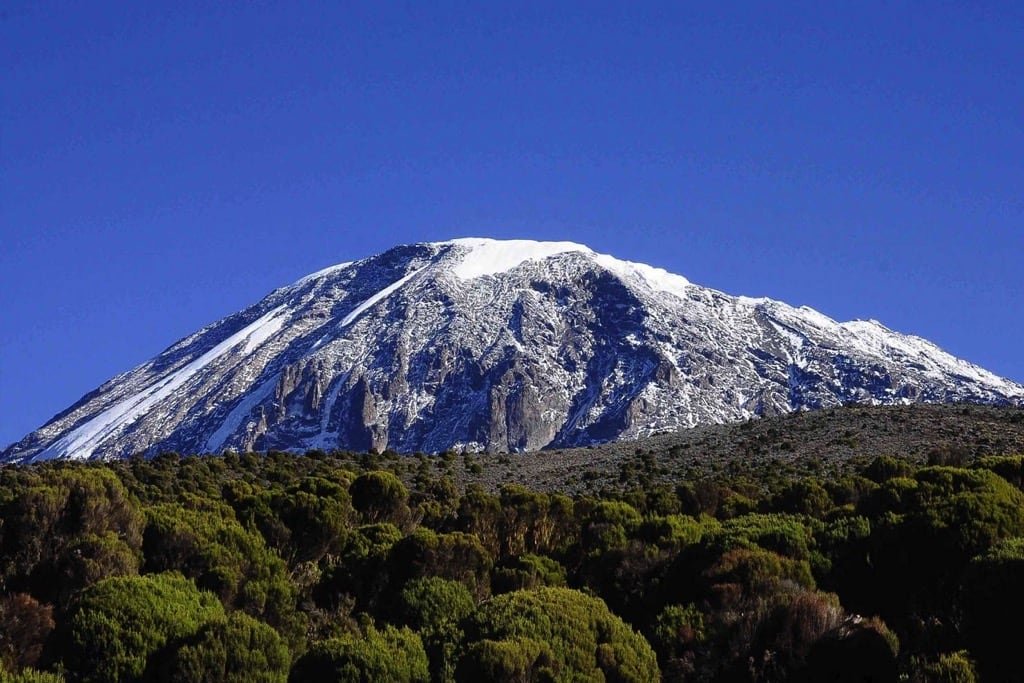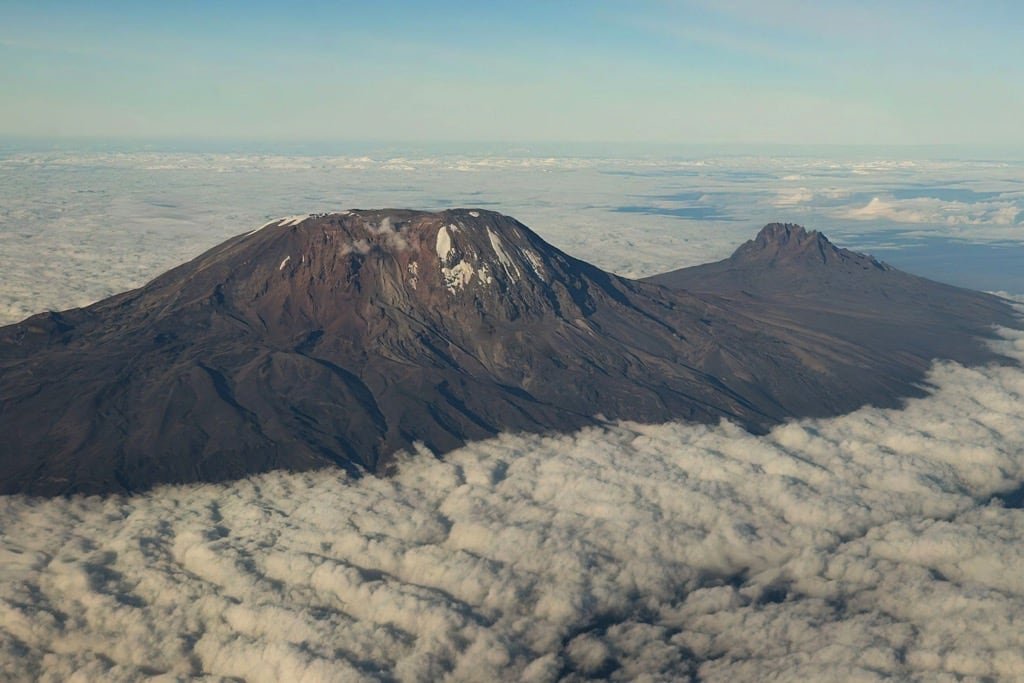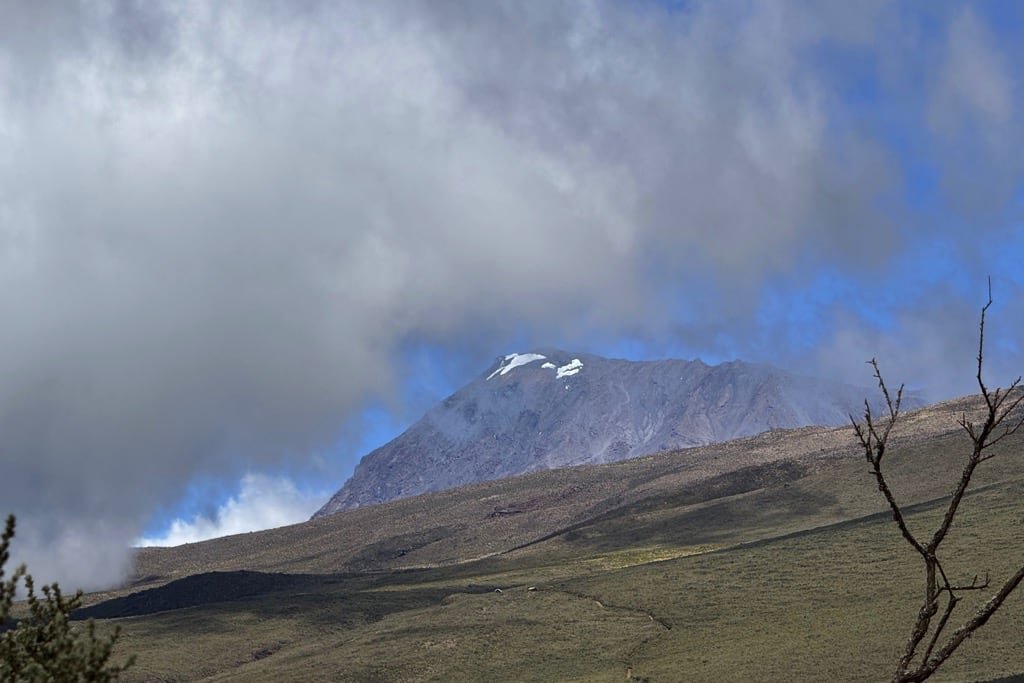








Home » Kilimanjaro National Park
1,688 km²
5,895 m
June to February
March to May
One of the unique features of Kilimanjaro National Park is its ecological diversity. The park’s vertical nature, rising from the foothills to the towering summit, allows for an incredible variety of habitats and wildlife, all within a relatively small area. As you ascend from the base of Kilimanjaro to its peak, you will experience five distinct ecological zones:
Cultivated Land (1,000 – 1,800 meters): At the lowest altitudes, the area surrounding the park is rich in agricultural land, where crops like coffee, bananas, and vegetables are grown by local communities.
Rainforest (1,800 – 2,800 meters): The lush rainforest is one of the most captivating features of the park, characterized by tall trees, moss-covered branches, and an abundance of birdlife. Here, trekkers can enjoy the sound of chirping birds and the sight of Colobus monkeys and the occasional elephant.
Heather and Moorland (2,800 – 4,000 meters): As you ascend, the landscape shifts to a more open and rugged terrain, with heather and moorland vegetation. This is where trekkers begin to see the dramatic shifts in scenery, with striking volcanic rock formations and expansive views.
Alpine Desert (4,000 – 5,000 meters): The alpine desert is a barren landscape with very little vegetation, only hardy plant species like lobelias and giant groundsel that can withstand the harsh conditions at high altitudes. It’s a surreal environment, offering stark beauty and a challenging atmosphere for those approaching the summit.
Arctic Summit (5,000 meters – 5,895 meters): The summit of Kilimanjaro, Uhuru Peak, is a stunning place where trekkers find themselves at the roof of Africa, surrounded by glaciers and icefields that have been slowly shrinking over the years. The view from the summit is nothing short of spectacular—vast, panoramic vistas that stretch across Tanzania, Kenya, and beyond.
Kilimanjaro National Park is home to a variety of wildlife, although the higher elevations are less populated due to the harsh environment. Lower down in the rainforest and moorland, you can spot animals such as:
Though Mount Kilimanjaro itself is not a traditional wildlife safari destination, the park is crucial for its role in conservation efforts. The park also works on protecting the mountain’s fragile ecosystem, which is under threat due to climate change, deforestation, and the shrinking glaciers on the summit.
For many, the main reason to visit Kilimanjaro National Park is to embark on the Mount Kilimanjaro climb. The park offers several established trekking routes to the summit, each with its own appeal and difficulty level:
Each route provides a different perspective on the mountain, its ecosystems, and its stunning landscapes. Climbing Mount Kilimanjaro requires preparation, but with the right guidance and planning, it’s a rewarding experience for those seeking a once-in-a-lifetime adventure.
Kilimanjaro National Park is not only a natural wonder but also an area of significant cultural importance. The park is surrounded by local communities, including the Chagga people, who have lived on the mountain’s slopes for centuries. The Chagga are known for their rich traditions, farming practices, and unique way of life. Visitors to the park can learn about local customs, visit traditional villages, and explore Chagga caves, which were historically used as hiding places from invaders.
Kilimanjaro National Park is committed to sustainable tourism practices to protect the mountain’s fragile environment and preserve its cultural heritage. When trekking Kilimanjaro, it is important to follow responsible travel guidelines, respect local customs, and minimise your ecological footprint. Many operators, including Timon Safaris, prioritize eco-friendly and socially responsible trekking experiences, ensuring that your adventure supports the long-term conservation of this natural treasure.
At Timon Safaris, we specialize in creating unforgettable experiences on Kilimanjaro. Whether you’re looking to climb to the summit or explore the stunning landscapes of the surrounding park, our expert guides, tailored itineraries, and commitment to safety ensure a memorable adventure. We offer personalized treks suited to all levels of experience, making sure that your journey to the Roof of Africa is as safe, rewarding, and enriching as possible.

Subscribe to our newsletter and get the latest updates & news.
